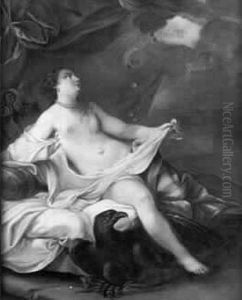L. Huquier Paintings
Gabriel Huquier, often referred to as L. Huquier, was a French engraver, draftsman, printmaker, and publisher. Born in Orléans, France, in 1715, Huquier was a prominent figure in the Rococo movement, which was characterized by ornate and asymmetrical designs featuring curves and gold. He moved to Paris to pursue his career, where he became a pupil and collaborator of the esteemed French engraver and artist Jacques-Philippe Le Bas.
Huquier is known for his engravings after the works of other artists, especially those of François Boucher, a French painter whose work epitomized the Rococo style. Boucher's influence is evident in Huquier's engravings, which often depicted pastoral scenes, mythological subjects, and decorative motifs. Additionally, Huquier produced a significant number of ornamental prints that were used by artisans and craftsmen as design sources for luxury objects, such as furniture, silverware, and porcelain.
Apart from his engravings, Huquier expanded his activities to include publishing, becoming a successful print publisher. He published many of his own prints and also sold works by other artists. His shop in Paris became a hub for art lovers, collectors, and fellow artists. Despite his commercial success, little is known about his personal life, and he did not achieve the same level of fame as some of his contemporaries.
Huquier's work was instrumental in disseminating the Rococo style throughout Europe. His prints were collected and copied, spreading the influence of French design and taste. He died in Paris in 1772, leaving behind a body of work that is still appreciated by art historians and collectors today. His engravings are held in various museums and libraries around the world, contributing to the understanding of 18th-century French art and the Rococo movement.
